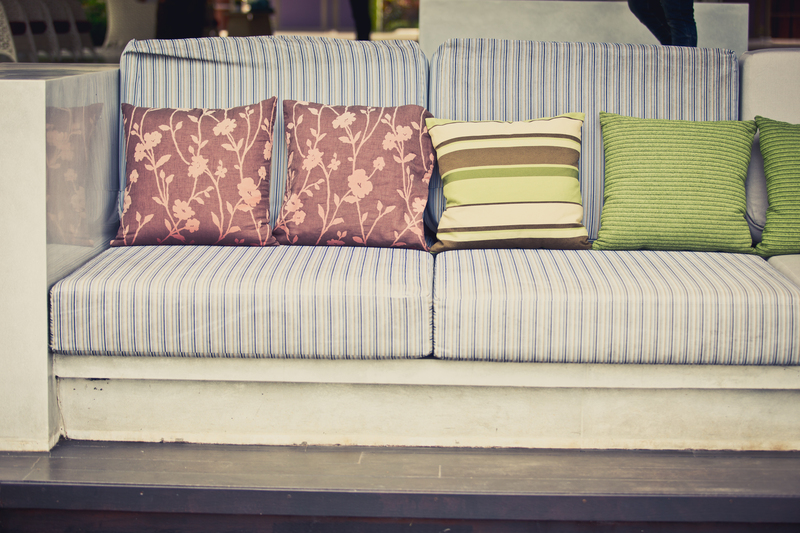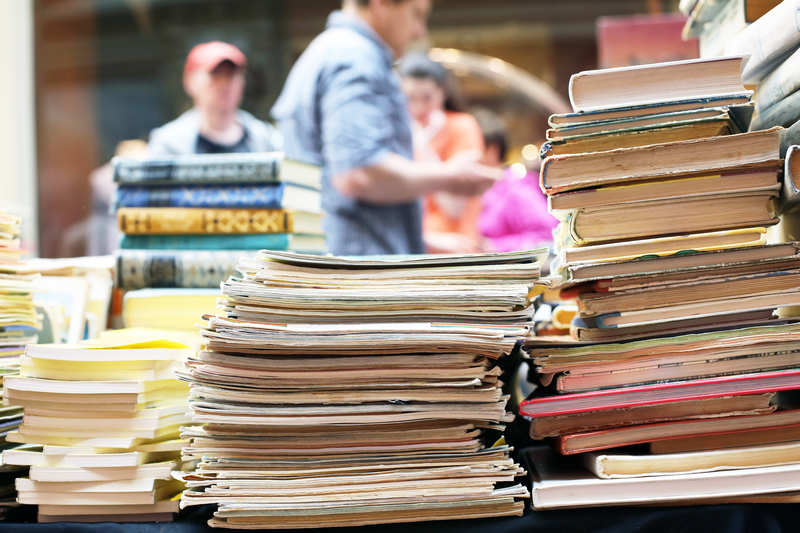Donate, Recycle, or Toss: The Best Options for Old Pots and Pans
When it comes to managing unwanted cookware, many homeowners face the dilemma of what to do with pots and pans that are no longer in use. Should you donate old cookware, attempt to recycle it, or simply throw it away? This comprehensive guide explores the most environmentally friendly and socially responsible solutions available, so you can make the best decision for your home and the planet.

Why Proper Disposal of Old Pots and Pans Matters
Disposing of old pots and pans sounds simple, but it can have a significant environmental and social impact. Many cookware items are made from metals like aluminum, stainless steel, or copper, which don't break down naturally in landfills. Additionally, perfectly usable cookware can benefit others in need. Understanding your options is a key step toward responsible decluttering and eco-friendly living.
Environmental Implications
- Metal cookware doesn't decompose and takes up landfill space for centuries.
- Tossed pans may contain non-stick coatings or plastics that can release toxins.
- Recycling cookware can conserve energy and raw materials.
Social Benefits of Donating Cookware
- Charitable organizations and shelters can use donated kitchenware.
- Families in need receive essential cooking tools.
- Extending the life of pots and pans reduces overall consumption.
Evaluating the Condition: When to Donate, Recycle, or Toss
Not all old pans and pots are equal. Before deciding their fate, assess their condition and potential for a second life.
1. Donation: Best for Usable Pots and Pans
- Pots and pans with no significant warping, cracks, or missing handles are ideal.
- Non-stick coatings should not be excessively scratched or peeling.
- Lids should be intact and fit their respective cookware.
If your cookware fits this description, donating old pots and pans can provide a new home for them.
2. Recycling: For Damaged or Non-Functional Cookware
- Cookware too worn out for use, especially metals like stainless steel or cast iron.
- Pans with layers of burnt food, rust, or extensive non-stick damage.
- Single-use pans that are not fit for charity or reuse.
Many materials used in making cookware are highly recyclable if processed correctly.
3. Tossing: The Last Resort
- Pots made from mixed materials that cannot be recycled separately.
- Cookware with toxic coatings that are flaking or peeling (such as old Teflon).
- Heavily damaged or rusted items that are unsafe even for scrap metal.
Throwing away cookware should only be considered when there is no safe or practical alternative.
Where and How to Donate Old Pots and Pans
If your pans and pots are still in good condition, opt for donating kitchen utensils and cookware. But where should you take them?
Charity Thrift Stores and Donation Centers
- Goodwill
- Salvation Army
- Habitat for Humanity ReStores
- Your local shelter or resale shop
Tip: Always check the donation guidelines for particular organizations. Some may not accept large or commercial-grade cookware, and others might have restrictions due to health regulations.
Community Organizations & Soup Kitchens
- Homeless shelters
- Women's shelters
- Community kitchens
- Food banks
Many community organizations appreciate the gift of gently used cookware. Call ahead to see if there's a need and what types of items are accepted.
Online Marketplaces and Local Giving Groups
- Facebook Marketplace
- Buy Nothing Project groups
- Craigslist "Free" section
- Nextdoor
Posting your old cookware for donation on local platforms increases the chance of direct reuse in your community.
Preparing Pots and Pans for Donation
- Clean thoroughly: Remove any food residue and stains.
- Match with lids: Try to donate a complete set for each item.
- Pack safely: To prevent scratches and damage during transport.
How to Recycle Old Cookware Efficiently
If your pots and pans are unfit for donation, recycling is the next greenest option. Here's how you can ensure your old cookware is properly recycled:
Identify the Material
- Aluminum: Common in lightweight cookware; often recyclable.
- Stainless Steel: Found in durable, shiny pots; always recyclable.
- Cast Iron: Heavier, often black or dark-grey; valuable at scrap yards.
- Copper: Less common, but always worth recycling due to its value.
- Non-stick or Ceramic Coatings: May need separation before recycling.
Find a Local Scrap Metal Facility
Check your local recycling or waste management department's guidelines. Some weekly curbside programs accept scrap metal, but most require drop-off at a recycling center or scrap yard. Search for "scrap metal recycling near me" or consult city resources.
- Look for scrap yards or metal recycling centers that accept household items.
- Many accept aluminum pans, old frying pans, and metal baking trays.
Prepare Your Cookware for Recycling
- Remove non-metal components, such as plastic handles and glass lids.
- Separate materials according to facility requirements.
- Clean off excess grease or food residue when possible.
Special Considerations for Non-Stick and Ceramic Cookware
Some non-stick coatings, especially older ones, may contain chemicals that can't be processed with regular metals. Ask your recycling center if they accept these items or if there is a special program for them.
When (and How) to Toss Old Pots and Pans
If neither donation nor recycling options are viable, disposing of pots and pans in the trash may be necessary. Here's how to minimize your environmental impact:
Check Local Waste Disposal Guidelines
- Some towns restrict metal disposal in regular trash and require drop-off at a transfer station.
- Hazardous waste days may accept old pans with toxic coatings.
- Inquire about "bulk waste" or "large item" pick-up days.
Prepare for Safe Disposal
- Wrap sharp edges to prevent injury to sanitation workers.
- Don't dispose of batteries or electrical components (from electric pans) in regular trash.
- Separate cookware from other hazardous household materials.
Creative Ways to Repurpose Old Cookware
Before choosing to toss your old pots and pans, consider upcycling for creative or practical uses around the home and garden!
Garden and Outdoor Uses
- Turn large pots into planters or herb containers.
- Use old pans as bird baths or seed trays.
- Repurpose cast iron pans as rustic garden art or stepping stones.
Home and Workshop Projects
- Wall-mounted pot lids become unique mirrors or clocks.
- Use pans as organizing trays for screws, nuts, and bolts in workshops.
- Transform copper pots into decorative hanging lampshades.
Frequently Asked Questions on Donating, Recycling, and Tossing Cookware
Can all pots and pans be recycled?
Most metallic cookware is recyclable, but items with mixed materials or certain coatings may not be accepted everywhere. Contact your local recycling center for specific rules.
Are there any pots and pans that should never be donated?
Do not donate cookware that is visibly damaged, warped, or has unhealthy surface degradation (such as flaking non-stick coatings or severe rust).
Will thrift stores accept non-stick pots and pans?
Only if the non-stick coating is in good condition. Always check with the store before bringing in your donation.
Should glass lids or ceramic handles be separated before recycling?
Yes, separate all non-metal parts to streamline the recycling process unless the facility suggests otherwise.
Is there a risk in using scratched or peeling non-stick cookware?
Yes, older non-stick coatings can leach harmful chemicals when damaged. It's best to recycle or dispose of these items safely.

Environmentally Friendly Disposal: Choosing the Best Option for Each Pot and Pan
Ultimately, the best way to dispose of old pots and pans depends on their condition and local resources. When you donate cookware, you provide valuable tools to others and reduce landfill waste. Recycling old pans and pots conserves energy and natural resources when donation isn't possible. Only toss cookware as a last resort when it can't safely be reused or recycled.
By following the strategies in this guide, you can make an informed, environmentally responsible decision every time you face unwanted kitchen items. Reduce, reuse, and recycle--your cookware, and your conscience, will thank you!
Quick Checklist: What to Do with Old Pots and Pans
- Assess the condition: Can it still be safely used?
- Donate usable pots and pans to charities or shelters.
- Recycle metal cookware by contacting recycling centers.
- Repurpose creatively if you're feeling crafty!
- Toss only as a last resort and follow local guidance for disposal.
Make the best choice for your old cookware: Donate, recycle, or toss responsibly!
```